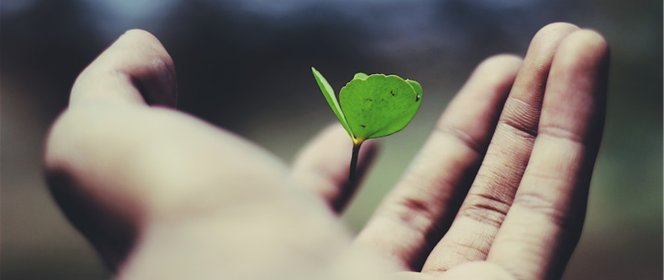Dr Pernille Holm – Senior lecturer in Graphic Design at Arden University
Metaphors of creativity – from suitcases to flowers in bloom
Creativity. It is a funny word. We think we know what it means. We describe people as being creative, or artworks as being creative, or someone’s approach to a problem – or indeed to life – as creative. And when we see it, or meet it, we recognise it. Creativity is when someone does a thing a little differently, comes up with something new or unexpected, finds interesting connections between things, or perhaps solves a problem. But as with so many interesting things in life, whilst we might recognise it when we see it, it can be tricky to define it in words.
For example, whilst being creative might be associated with ‘problem-solving’, it cannot be reduced to this. You could solve a maths problem, or fill in your tax return without necessarily being creative – indeed too much creativity here could get you into trouble!
I have been following the work of the British neuroscience researcher, philosopher, and literary scholar Ian McGilchrist. He suggests, ‘The nature of creativity is to make space for things to happen... We can drive it out with our busyness and plans.’ (brainyquote.com)
McGilchrist also compares the process of being creative to gardening. ‘Growth’ is a good metaphor as it allows us to think of creativity as a process, and as something that evolves (in and through us) in phases.
At the start of this process, we must set time aside to prepare – just as the gardener would prepare the soil for the seed. We cannot be creative on command. Telling someone to ‘be creative!’ just does not work. At the stage of preparation, we gather information, we research, we sift and sort. These activities probably do not feel very creative. And yet they are part of the process.
As artists and designers, we might also give ourselves some ‘problems’ to work on at this early stage of exploration. We might make it deliberately hard for ourselves to force us out of our comfort zones. We might turn things upside down, inside out, invert the colour scheme, tear the paper up in the air and see where it lands. In this way we might get to the point where we sense a solution, or get a good feeling about something.
And then we have to let it go. Because we cannot force true creativity, we have to disengage from our project in our conscious mind and let our unconscious mind take over. Maybe this sounds a bit weird, but it is not really that strange when you think about it. Our bodies do all sorts of things without us being aware of it. Take your breath for instance – we breathe all the time, but we are not necessarily conscious of it. This is the period of incubation: you have planted the seed, and are now waiting to see what happens. You step away, sleep on it, and resist the temptation to interfere. This is important, because you can spoil it by bringing your analytical and often very critical conscious mind in too soon. It is like killing the poor seedling with too much fertiliser or water. You just have to have faith in the process, and that the magic will unfold when you let it be.
When I went to art college (a long time ago), my lecturer advised me to think of my conscious and analytical mind, and all the clever theories I had, as the content of an imaginary suitcase. And then she asked me to leave that suitcase outside the door to my art studio. It did not belong in there, but could be accessed if needed.
Often, if you give an idea some time to ‘incubate’, the project you are working on will unfold organically. But not always – and we have to accept that too. In our time, we are very focused on effectivity, and everything having a defined purpose, but some things just take time, and sometimes it does not work out. That is the chance you take, if you want to open up to being truly creative.
But when it does work out, after the incubation phases, we reach the stage of illumination, which we might align to the bloom of the flower. This is often experienced as an AHA moment – the solution, the unexpected connection, the new gestalt, which seems to come out of nowhere. But of course it does not come out of nowhere: it comes out of our unconscious processes whirring away when we let it be whilst getting on with other things – when we have a shower, go for a walk, do our shopping – and suddenly: light bulb-moment!
And then the hard work starts: we have to put that idea into practice and realise it. We might even have to bring in the analytical mind again (stored in the suitcase outside the door, remember) to critique it, so we can refine the idea a little more.
In conclusion, to be truly creative you have to engage with a process, an important part of which involves entering a state of open receptivity, a kind active passivity. You have to be able to tolerate ambiguity and be comfortable with the unfamiliar. And you have to give it time and space. Be patient with the process and yourself.
References:
McGilchrist, I. (n.d.) Iain McGilchrist quotes [online]. Available at: https://www.brainyquote.com/quotes/iain_mcgilchrist_560090 (Accessed 16 Feb. 2023)
McGilchrist, I. (2021) The Matter with Things. UK: Perspectiva Press
McGilchrist, I. (2022) Understanding The Matter with Things Dialogues Episode 8: Chapter 8 Creativity [YouTube video]. Available at: https://www.youtube.com/watch?v=WivRq9xPfns (Accessed 16 Feb. 2023)
Reflective Writing